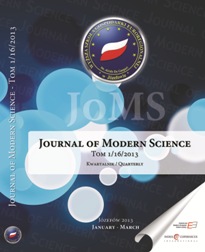Elastyczne formy zatrudnienia jako alternatywne źródło walki z bezrobociem.
Flexible forms of employment as an alternative way of tackling unemployment.
Author(s): Wiesław BreńskiSubject(s): Labor relations, Socio-Economic Research
Published by: Wydawnictwo Wyższej Szkoły Gospodarki Euroregionalnej im. Alcide De Gasperi w Józefowie
Keywords: employment; unemployment; labor market; flexible forms of employment; human capital in the company;
Summary/Abstract: Increasing the flexibility of the Polish labor market is one of the main factors increasing the competitiveness of the Polish economy. The development of non-standard forms of employment is also associated with use of outsourcing solutions. It is the definition of flexible forms of work, ask yourself what is the flexibility of the labor market? There is certainly a easy concept. The concept of labor market flexibility are closely related concepts such as flexible working, flexible working hours, wage flexibility, elasticity of labor supply, geographical mobility, occupational and friction. According to the proponents of neo-liberal economics, more flexible”labor market is the most effective way to combat unemployment. However, the dominance of the implementation of flexible employment models as the main means of combating unemployment is not the support of the majority of economists. The concept of flexible forms of employment is related to the concept of flexicurity, the idea of seeking a compromise between the interests of employers and benefits for employees.The development of this concept is found in the European Employment Strategy developed by the Council for Employment and Social Affairs. The term is derived from the words flexibility and security. Flexicurity is also identified with the guarantee of safe passage between: education and work, running a household and work, moving from job to job, unemployment and labor, or the different types of contracts.
Journal: Journal of Modern Science
- Issue Year: 17/2013
- Issue No: 2
- Page Range: 285-296
- Page Count: 12
- Language: Polish

